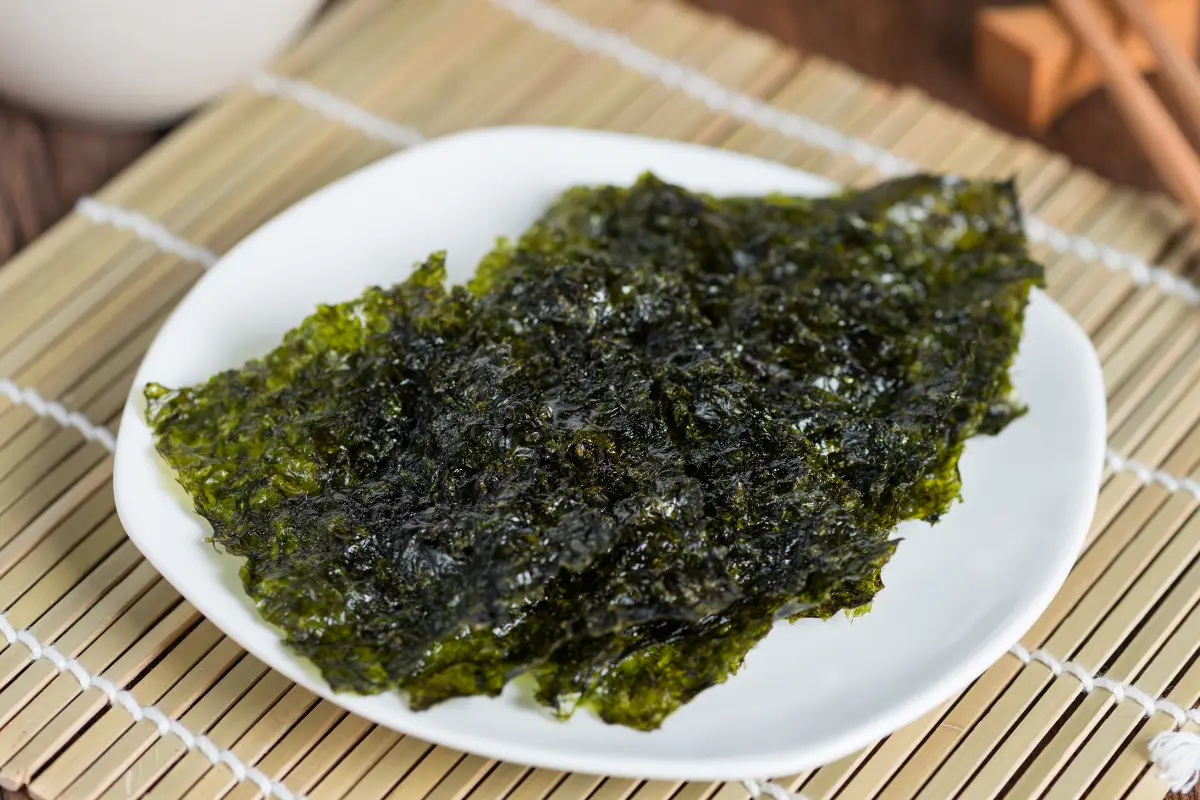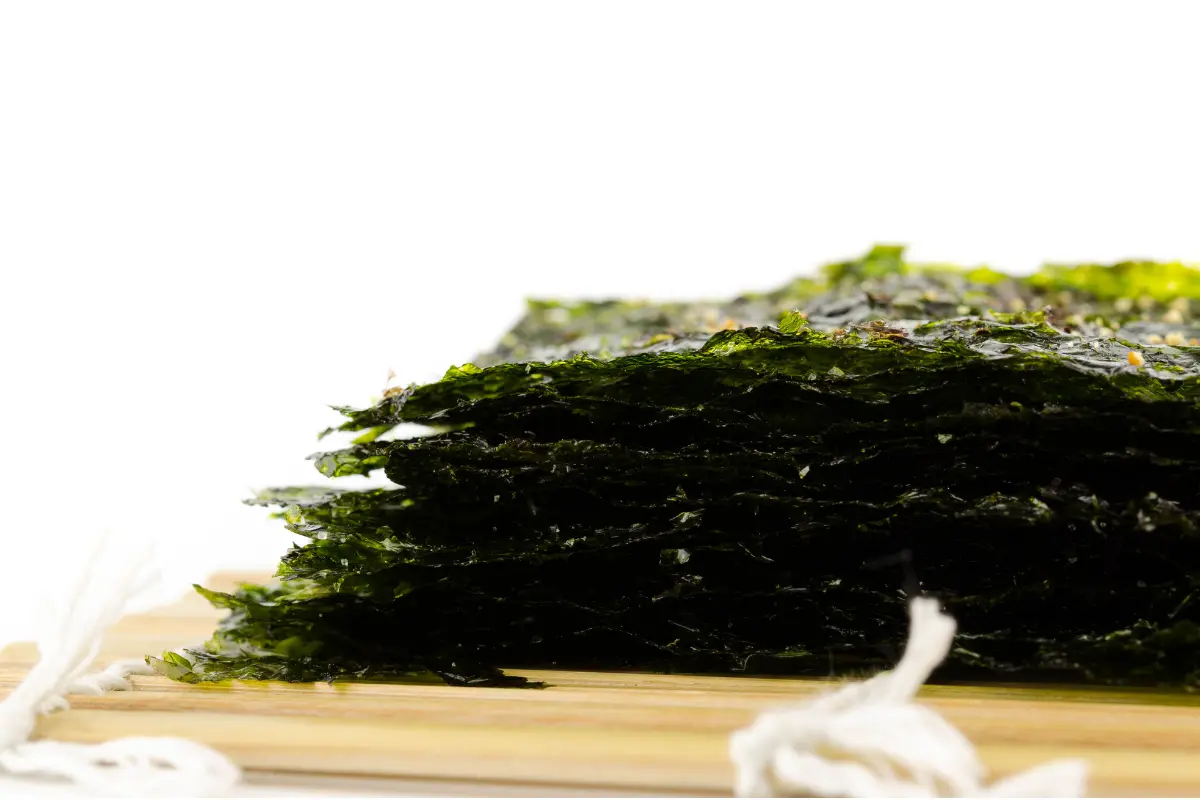Embarking on a culinary journey that embraces both the simplicity and the profound nutritional benefits of the sea, this article delves into the world of seaweed snacks. A treasure trove of health packed in thin, crispy sheets, seaweed is a versatile ingredient that promises not just a burst of savory flavors but a multitude of benefits for those who include it in their diet. From the basic preparation methods to creative serving suggestions, we unfold the secrets to crafting homemade seaweed snacks that are not just healthier but infinitely more satisfying than their store-bought counterparts. Let’s dive into the depths of seaweed’s potential, exploring how to select, prepare, and savor this oceanic delight.
Seaweed Snacks
The Rising Tide of Seaweed Popularity
Seaweed snacks, with their crispy texture and savory umami flavor, have ridden the wave of health-food trends to emerge as a global favorite. Originating from the coastal cuisines of Asia, these snacks have captured the hearts of health-conscious individuals everywhere, thanks to their rich nutritional profile and versatile snacking options. But what exactly makes seaweed snacks such a catch?
Well, for starters, they’re packed with vitamins, minerals, and fiber, offering a guilt-free munching option. Moreover, the iodine content in seaweed plays a crucial role in thyroid health, making these snacks more than just a tasty treat—they’re a boon for your body.
Health Benefits: A Deep Dive
Seaweed isn’t just another ingredient; it’s a superfood. High in vitamins A, C, E, K, and B vitamins, it’s also a stellar source of calcium, iodine, iron, and antioxidants. Incorporating seaweed snacks into your diet means you’re not just satisfying your snack cravings; you’re also fortifying your body with essential nutrients.
But wait, there’s more. Seaweed is also known for its fiber content, which can aid in digestion and keep you feeling full longer. And for those keeping an eye on their calorie intake, rejoice! Seaweed snacks are low in calories, making them an ideal snack for weight management.
Transitioning seamlessly into your diet, seaweed snacks can be enjoyed in various ways. Whether you’re after a quick snack, a savory addition to your meals, or a nutritious boost, seaweed snacks are as flexible as they are beneficial. So, why not dive into the crispy, nutrient-packed world of seaweed snacks? Your taste buds and your health will thank you.
Preparing to Make Seaweed Snacks
Selecting the Right Seaweed
Diving into the world of homemade seaweed snacks begins with one crucial step: selecting the right type of seaweed. Not all seaweed is created equal, and the type you choose can significantly impact the texture and flavor of your snacks. For those crispy, light snacks we all love, Korean raw dried seaweed sheets, known as Parae-gim or Dol-gim, are your best bet. These varieties are specifically tailored for snacking, with a delicate texture that crisps up beautifully.
When shopping for seaweed, keep a keen eye on the expiration date to ensure freshness. Fresh seaweed should boast a deep green or almost black color, without any hint of a purple tint, which could indicate age or poor quality. Remember, the fresher the seaweed, the more delicious and nutritious your snacks will be.
Essential Ingredients and Tools
Once you’ve got your seaweed, it’s time to gather the rest of your ingredients and tools. Making recipe is surprisingly simple, and you won’t need a long list of items. Here’s what you’ll need:
- 30 sheets of plain raw dried seaweed (Parae-gim or Dol-gim)
- 1 tablespoon of sesame oil
- 1 tablespoon of grape seed oil (or olive oil for a non-fragrant option)
- Fine sea salt or kosher salt, to taste
And as for tools, you’ll only need a few kitchen basics:
- A small mixing bowl for your oils
- A brush or a disposable plastic glove for evenly spreading the oil
- A skillet or pancake griddle for toasting the seaweed
- Kitchen tongs for flipping the seaweed sheets
With your ingredients and tools ready, you’re all set to embark on the flavorful journey of making your own seaweed snacks. The simplicity of the process, combined with the ability to control the quality and quantity of the ingredients, makes homemade seaweed snacks a superior choice for health-conscious snackers everywhere.
In the next section, we’ll dive into the step-by-step process of transforming these simple ingredients into crispy, savory delights that are perfect for any snacking occasion. Stay tuned as we explore the art of making seaweed snacks that not only tantalize your taste buds but also contribute to a healthier, happier you.
Seaweed Snacks Recipes
Basic Seaweed Snack Recipe
Embarking on the adventure of making your own recipe is not only rewarding but surprisingly straightforward. Let’s get into the basics of crafting these crispy treats.
Ingredients:
- 30 sheets of plain raw dried seaweed (Parae-gim or Dol-gim)
- 1 tbsp sesame oil
- 1 tbsp grape seed oil (or olive oil)
- Fine sea salt or kosher salt, to taste
Instructions:
- Mix Your Oils: In a small bowl, whisk together the sesame and grape seed oils. This blend will give your seaweed that perfect crisp without overpowering it with fragrance.
- Oil the Seaweed: Using a brush or a gloved hand, gently spread a thin layer of the oil mixture on one side of each seaweed sheet. A little goes a long way here—you’re aiming for a light coat.
- Season: Lightly sprinkle your oiled seaweed with salt. The amount is up to you, but remember, the goal is to enhance, not overwhelm.
- Toast: Heat your skillet or griddle over medium heat. Once hot, lay a seaweed sheet, oiled side up, on the surface. It should start to shrink and crisp up almost immediately. Flip after 2-3 seconds and toast the other side. Each sheet should take no more than 5 seconds to perfect.
- Cool and Enjoy: Let your toasted seaweed cool before diving in. This will help achieve that signature crispiness.
Advanced Seaweed Snack Ideas
For those looking to elevate their seaweed snack game, consider these creative variations:
- Sesame and Garlic: Add minced garlic to your oil mixture and sprinkle toasted sesame seeds over the seaweed sheets before toasting.
- Spicy Kick: Mix a dash of chili flakes or a few drops of hot sauce into your oil for seaweed with a bit of heat.
- Sweet and Savory: A tiny drizzle of honey with a pinch of salt offers a delightful contrast.
Creative Serving Suggestions
Seaweed snacks are incredibly versatile. Here are a few ways to serve them:
- With Rice: Wrap a bit of sticky rice in a seaweed snack for a quick, satisfying bite.
- As a Salad Topper: Crumble some toasted seaweed over your next salad for a crunchy, nutritious addition.
- Dip ‘Em: Combine them with a light soy sauce or a sesame dipping sauce for an extra flavor boost.
By now, you should be well-equipped to start making your own recipe at home. Whether you stick to the basics or experiment with flavors, these snacks are sure to be a hit. Remember, the key to the best seaweed snacks lies in the balance of oil, salt, and toasting time. Happy snacking!
Nutritional Benefits and Considerations
Health Benefits of Seaweed Snacks
Seaweed snacks are much more than a trendy, crunchy treat. They’re a powerhouse of nutrition, offering a wide array of health benefits that cater to a variety of dietary needs and preferences. Let’s dive into the sea of benefits these snacks provide.
Firstly, seaweed is renowned for its high vitamin content, including A, C, E, and K, along with a suite of B vitamins. These nutrients play vital roles in everything from maintaining healthy skin and eyes to supporting the immune system and reducing inflammation. Additionally, seaweed is a fantastic source of minerals like calcium, magnesium, and particularly iodine, which is essential for thyroid function and metabolic health.
Moreover, the fiber in seaweed aids digestion and can contribute to a feeling of fullness, helping with weight management. Seaweed also contains antioxidants that combat oxidative stress and may reduce the risk of chronic diseases such as heart disease.
Dietary Considerations
While recipe are incredibly nutritious, there are a few considerations to keep in mind, especially regarding dietary restrictions and potential allergies. For individuals monitoring their sodium intake, it’s important to control the amount of added salt when preparing homemade recipe. Additionally, while seaweed is naturally gluten-free and vegan, those with specific allergies should ensure that cross-contamination is not a concern, particularly when purchasing pre-made or packaged snacks.
Seaweed snacks fit beautifully into a balanced diet, providing a nutrient-rich option for those seeking healthier snack alternatives. They are especially appealing for those following vegetarian or vegan diets, offering a plant-based source of vitamins and minerals that might be harder to obtain otherwise.
By integrating seaweed snacks into your dietary regimen, you can enjoy not just their savory taste but also their myriad health benefits. From bolstering your nutritional intake to offering a satisfying, guilt-free snack option, seaweed snacks are a smart choice for health-conscious individuals looking to enrich their diet with the goodness of the sea.
Storage and Serving Suggestions
Storing Your Seaweed Snacks
After you’ve taken the plunge into making homemade recipe, ensuring they remain as crispy and delicious as when you first made them is key. Here’s how to keep them fresh:
- Airtight Containers: The secret to maintaining the crispness of seaweed snacks lies in storing them in an airtight container. This prevents moisture from seeping in and making them soggy.
- Room Temperature Storage: Keep your seaweed snacks at room temperature in a cool, dry place. Avoid refrigeration, as the dampness can compromise their texture.
- Freezer-Friendly: For long-term storage, you can also keep your seaweed snacks in the freezer. They remain fresh and don’t require thawing – just eat straight from the freezer for a crunchy snack!
With proper storage, your seaweed snacks can last for 2-3 days at room temperature or up to 2-3 months in the freezer. Always ensure they’re completely cool before sealing them away to avoid any condensation build-up.
Creative Ways to Serve Seaweed Snacks
Seaweed snacks are incredibly versatile, serving as more than just a solo treat. Here are some innovative ways to incorporate them into your meals:
- Rice Partner: A classic serving suggestion is with rice. A simple seaweed wrap around a spoonful of rice can elevate a humble dish with a burst of flavor and texture.
- Salad Crunch: Crumble recipe over salads for an added crispy dimension. They offer a nutritious, flavorful alternative to croutons.
- Soup Garnish: Add strips of seaweed snacks to soups for a unique umami boost and an enticing contrast in textures.
These serving suggestions showcase the adaptability of seaweed snacks, making them a staple in any culinary repertoire. Whether enjoyed on their own or as part of a larger dish, they bring a distinct savoriness and nutritional profile that can enhance any meal.
By following these storage tips and exploring creative serving ideas, you can ensure that your seaweed snacks remain a delightful and nutritious option for any occasion. Enjoy the journey of discovering the many ways to savor these seaweed delights, from the crunch of a solo snack to the enhancement of your favorite dishes.
FAQs Based on People Also Ask
Seaweed snacks, with their burgeoning popularity, have sparked curiosity and questions about their preparation, health benefits, and versatility. Here are some frequently asked questions that shed light on these crispy, oceanic treats.
Are Seaweed Snacks Really Healthy?
Absolutely! Seaweed snacks are loaded with nutrients, including vitamins A, C, E, and K, along with essential minerals like iodine, calcium, and iron. They’re a fantastic source of dietary fiber and antioxidants, contributing to heart health, weight management, and overall wellness. However, like with any food, moderation is key, especially concerning added salt and oil in store-bought versions.
Can I Make Seaweed Snacks Without Oil?
Yes, you can. While oil helps achieve that desirable crispiness and adds flavor, you can opt for a lighter version by simply toasting the seaweed sheets in a dry pan or oven. This method enhances the natural flavors of the seaweed without the added fats, making for a lighter snack.
How Do I Make My Seaweed Snacks Crispy Again?
If your seaweed snacks have lost their snap, fear not. You can easily revive their crispness by toasting them briefly in a pan over medium heat or popping them in the oven for a few minutes at a low temperature. Just be vigilant to avoid burning them; it only takes a few seconds to bring back that satisfying crunch.
Can Seaweed Snacks Be Part of a Keto Diet?
Yes, seaweed snacks can be a great addition to a keto diet. They are low in carbohydrates and calories, making them an excellent choice for those following a ketogenic lifestyle. Just be mindful of the oil and salt content, particularly in pre-packaged snacks, to stay within your dietary goals.
Are There Any Allergens in Seaweed Snacks?
Seaweed itself is free from common allergens like gluten, nuts, and dairy, making it a safe choice for most people. However, cross-contamination can occur during processing, and some store-bought recipe may contain added ingredients that could trigger allergies. Always check the label if you have specific food sensitivities.
By addressing these FAQs, we hope to have cleared up some of the mystique surrounding recipe and encouraged you to incorporate these nutritious, tasty treats into your snack rotation. Whether you’re making them at home or picking them up from the store, seaweed snacks offer a unique blend of health benefits and flavors that can enrich any diet.






